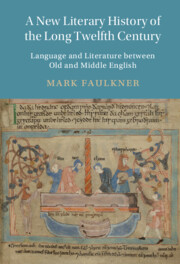 A New Literary History of the Long Twelfth Century
A New Literary History of the Long Twelfth Century Book contents
- A New Literary History of the Long Twelfth Century
- Cambridge Studies in Medieval Literature
- A New Literary History of the Long Twelfth Century
- Copyright page
- Dedication
- Contents
- Figures
- Acknowledgements
- Conventions Used
- Abbreviations
- Part I Preliminaries
- Part II The Affordances of English
- Chapter 3 English in the Linguistic Ecology of the Long Twelfth Century
- Chapter 4 English as a Language of Documentary Record
- Chapter 5 English as a Language for Writing History
- Chapter 6 English as a Language for Sermon Writing
- Chapter 7 Conclusion
- Bibliography
- Index
- Cambridge Studies in Medieval Literature
Chapter 6 - English as a Language for Sermon Writing
from Part II - The Affordances of English
Published online by Cambridge University Press: 14 July 2022
- A New Literary History of the Long Twelfth Century
- Cambridge Studies in Medieval Literature
- A New Literary History of the Long Twelfth Century
- Copyright page
- Dedication
- Contents
- Figures
- Acknowledgements
- Conventions Used
- Abbreviations
- Part I Preliminaries
- Part II The Affordances of English
- Chapter 3 English in the Linguistic Ecology of the Long Twelfth Century
- Chapter 4 English as a Language of Documentary Record
- Chapter 5 English as a Language for Writing History
- Chapter 6 English as a Language for Sermon Writing
- Chapter 7 Conclusion
- Bibliography
- Index
- Cambridge Studies in Medieval Literature
Summary
This chapter argues that sermons are the one genre where there is a more-or-less continuous tradition of using English through the long twelfth century, a consequence of the pragmatic necessity of communicating with a largely monoglot laity. It begins with an account of twelfth-century preaching and the role of written texts vernacular and Latin in its performance. It then considers the Vespasian Homilies, a booklet of four sermons produced in Kent around 1200, focusing on Vespasian 2, which it argues is a distinctively Middle English text, probably composed around 1150, but which shows substantive debts to Ælfric and pre-Conquest textual culture. The final section of the chapter considers, along with two other related manuscripts, the Lambeth Homilies, copied around 1200 in Worcestershire, showing that similar continuities and developments can be traced there. Sermons, in short, were the primary vehicle for the continuity of practices for writing English in the period.
Keywords
- Type
- Chapter
- Information
- A New Literary History of the Long Twelfth CenturyLanguage and Literature between Old and Middle English, pp. 184 - 224Publisher: Cambridge University PressPrint publication year: 2022
